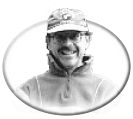|
|
|
List of BC Adventure Advertisers Site Info
Advertise With UsAwards About Us Contact Us  Kayak with Killer Whales Free Vacation Guides
BC Vacation GuidesCoastal Vacations Thompson Okanagan EcoTourism Fishing Vacations Guest Ranch Guide Romantic Getaways Wilderness Vacations Winter Vacations The Rockies Guide 
Coastal Spirits Expeditions Login |
Winter fishing is influenced by waves of feeder chinook that begin nosing into local bays in October. So thick are their numbers that Buzz Bombs elicit strikes nearly every cast. Alas, the fishery remains untapped; due to Hakai Pass' remote location, lodges presently close for business in the winter. Summer fishing is influenced by first access to runs of salmon arriving fresh from the ocean bound for the Rivers Inlet basin and southern rivers. The IGFA World Record 85.5 lb chinook, taken on 20 lb test line, took the hook in August 1987. However, bigger monsters lurk the deep; commercial fishermen landed a 126 lb chinook off Cape Calvert in recent years. Be prepared to wear out your arm with 20+ fish days. And fishing in this area can only keep on improving. In an innovative move, local resorts opened a hatchery at Shotbolt Creek in Rivers Inlet 10 years ago, beefing up an already impressive run of 50 - 60 lb chinook. Annual
Cycle of Runs October 15 - May 15, winter feeder chinook inhabit the shallow waters of local bays feeding on vast schools of herring. In June, feeder and white-fleshed chinook may top 38 pounds. June also brings the first of the summer runs to Hakai Pass. En route to the Fraser River early in the month, southern sockeye intermingle with their Bella Coola River cousins as the month progresses. Tyee chinook fishing (chinook exceeding 30 lbs) begins in July and peaks in the third week in August. July coho average 9 - 15 lbs. During August and September, their size increases to a truly impressive 15 - 25 lbs. Various coho runs converge - from local Rivers Inlet rivers to as far south as the Columbia River in Oregon. In August, bright chrome chum vie with coho and pink for the angler's cutplug. Blistering is the only word that justly describes the run of a 20 lb chum in full flight.
Lures
on an Annual Basis Bottom species prove sympathetic to offerings of herring fished 4' from a spreader bar and a 16 oz weight. Hootchies: Not currently utilized, however, the Army Truck and white patterns suggest themselves as good first bets. Plugs: Not currently utilized, however, any typical 5 - 6" Pacific plug, for example, the 602, 302 or 500 should produce. Spoons: Not currently utilized, however, a Coyote spoon should produce early in the season and a red Krippled K later in the summer. Bucktails: Not currently utilized, however, local schools of black bass in kelp beds on the west side of Calvert Island present the possibility of non-stop action for flyfishermen using green Clouser Minnows. Early in the season, Koeye River opportunities exist for steelhead, cutthroat and Dolly Varden. Drift Fishing: If you can finagle a winter trip through a lodge owner, stand on the dock and resolutely fling the simplest drift fishing lure of them all: the white Buzz Bomb.
Overall Strategy and Specific Fishing Areas Salmon fishermen concentrate on Odlum Point, where salmon first touch Calvert Island at the entrance to Hakai Passage. While virtually all points and headlands on the Passage produce salmon, make sure not to miss The Gap and Barney Bay. Further afield, Spider Island, some 20 miles to the north west, provides exceptional action tight to the kelp bed on the wall. All species of salmon press through high in the water column. Consequently, feed more than bottom structure influences the summer catch. Feed is pushed dramatically by tide curling around reefs and rocky points. At 12 - 20 pulls, a tug on the end of the line far more commonly indicates contact of the fishy kind than the rocky kind. Bottom fishermen can literally catch 15 - 25 lb red snapper all day long. Intermingled with these googly-eyed creatures are toothy-mouthed lingcod to 40 lbs. Try the 40 - 200' shoals in West Bay, Airocobra and Dublin Point areas. For the halibut inclined, 'butts' to 100 lbs lure themselves from right under the dock. More conventional locations would include West Bay and shoals off the broad mouth of Hakai Passage. Look for the unending surge of ocean swell and find the ridges where the territorial fatties reside.
|
 Follow Us On Facebook Articles Coastal BC FisheriesSeafood Recipes (Pt1) Seafood Recipes (Pt2) Seafood Recipes (Pt3) Seafood Recipes (Pt4) Hot Spots
BamfieldCampbell River Gold River Hakai Pass Langara Island Port Alberni Port Hardy Port Renfrew Prince Rupert Rivers Inlet Shearwater Tofino Victoria Waterfront Salmon Online
Chinook SalmonChinook of Juan de Fuca Chum Salmon Coho Salmon Contacting the Fish Guide Your Way To Success Happy Halibut Hunting Happy Halibut Hunting (Pt2) Happy Halibut Hunting (Pt3) Harvesting the Herring Likes the Lakes Pink Salmon Sockeye Salmon Steelhead Bobber Tip The Butts of Bamfield Trolling Tip for Sidney Techniques
Boat Electrical PotentialCasting for Your Catch Drift Fishing (Pt1) Drift Fishing (Pt2) Mooching for Salmon Tough Knots for Big Fish Trolling for Salmon (Pt1) Trolling for Salmon (Pt2) Trolling for Salmon (Pt3) Winter Fishing the Capital Writers:
Peter Caverhill Brian Chan Fred & Ann Curtis Ian Forbes Geoff Hobson Gordon Honey Steve Kaye Fred's Custom Tackle Ron Newman D. C. Reid Philip Rowley Barry Thornton |
||||||||||||||
|
||||||||||||||||
